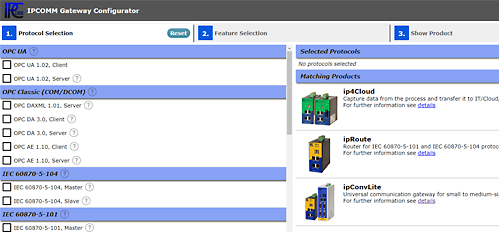Description
-
The challenge of the project was to couple the central control devices (ZLG) to the superordinate control stations (TLS-Nord, TLS-Süd and BSV).
- The IEC 870-5-101 connection (1) will later be used to query diagnostic information or determine the switch authorization and it defines the switch authorization for TLS and BSV.
- The IEC 870-5-104 connection (2) provides access to the ZLG. Both, the IEC 870-5-104 transport layer and the IEC 870-5-101 application layer are used here.
- ipRoute passes the ASDUs (application layer) transparently to the ZLG. The link/transport layers between ipRoute and the relevant communication partner operate in in point-to-point mode.
- Data flow towards HS Management is assigned to several RS232 connections as per the common address of the ASDU, to avoid bottleneck situations.
- ipRoute can behave like a virtual RTU, i.e. the HS Management system can draw information on the state of the individual ZLG connections directly from ipRoute.
- ipRoute configuration is limited to the transport paths. Individual information objects are not configured.
- There is redundant coupling (3) between ipConv Nord and ipConv Süd. This connection determines which system is active and which is passive. The active/passive state is only relevant for the connection towards BSV and TLS, towards the substation, ipConv Nord and ipConv Süd receive data simultaneously. The physical link is realized with the Ethernet, connecting TLS Nord and TLS Süd. Both devices monitor each other by sending regular life signs to the remote partner (every second). If no life sign is received from the remote partner for a certain period (~5 seconds), it is considered down. If communication fails between ipConv Nord and ipConv Süd, both systems change to active state.
- ZLGs are connected to the Ethernet via RS232/Ethernet converter ipEther
232. Data is passed through transparently.
See also the follow-up project "BLS Lötschbergtunnel II"
Background of the Project
Construction work on the Loetschberg tunnel (mountain line) first started in October 1906. In 1913, a 14.6 km long stretch between Kandersteg and Goppenstein was opened to the public.
At present, the new Loetschberg base tunnel is being built as part of the NEAT initiative (New Railway Alp Crossing = Neue Eisenhahn-Alpentransversale). The Lötschberg base tunnel, with its 34.6 km length, is one of the longest railway tunnels worldwide, it connects Frutigen (canton of Berne, Switzerland) with Raron (canton of Wallis). The tunnel enables a fast north - south traffic route, effecting substantial expansion of capacity and choice.
The Loetschberg railway is to be operated by the BLS Loetschbergbahn AG (BLS = Bern-Loetschberg-Simplon)
For further information please go to: http://www.bls.ch
Product Wizard 
- To the Gateway in a snap
- Get in touch!
- Customer support
+49 911 18 07 91 - 0
support@ipcomm.de
Product consulting
+49 911 18 07 91 - 0
info@ipcomm.de


